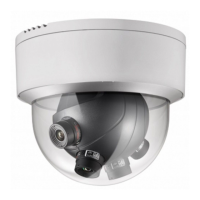H.265+
H.265+ is an improved compression coding technology based on H.265. By enabling H.265+, you
can the HDD by its maximum average bitrate. Compared to H.265, H.265+
reduces storage by up to 50% with the same maximum bitrate in most scenes.
When H.265+ is enabled, Max. Average Bitrate is The device gives a recommended
max. average bitrate by default. You can adjust the parameter to a higher value if the video quality
is less Max. average bitrate should not be higher than max. bitrate.
Note
When H.265+ is enabled, Video Quality, I Frame Interval, and SVC are not
I-Frame Interval
I-frame interval the number of frames between 2 I-frames.
In H.264 and H.265, an I-frame, or intra frame, is a self-contained frame that can be independently
decoded without any reference to other images. An I-frame consumes more bits than other
frames. Thus, video with more I-frames, in other words, smaller I-frame interval, generates more
steady and reliable data bits while requiring more storage space.
SVC
Scalable Video Coding (SVC) is the name for the Annex G extension of the H.264 or H.265 video
compression standard.
The of the SVC has been to enable the encoding of a high-quality video
bitstream that contains one or more subset bitstreams that can themselves be decoded with a
complexity and quality similar to that achieved using the H.264 or H.265
design with the same of data as in the subset bitstream. The subset bitstream is derived
by dropping packets from the larger bitstream.
SVC enables forward for older hardware: the same bitstream can be consumed by
basic hardware which can only decode a subset, while more advanced hardware
will be able decode high quality video stream.
MPEG4
MPEG4, referring to MPEG-4 Part 2, is a video compression format developed by Moving Picture
Experts Group (MPEG).
Network Camera User Manual
14

